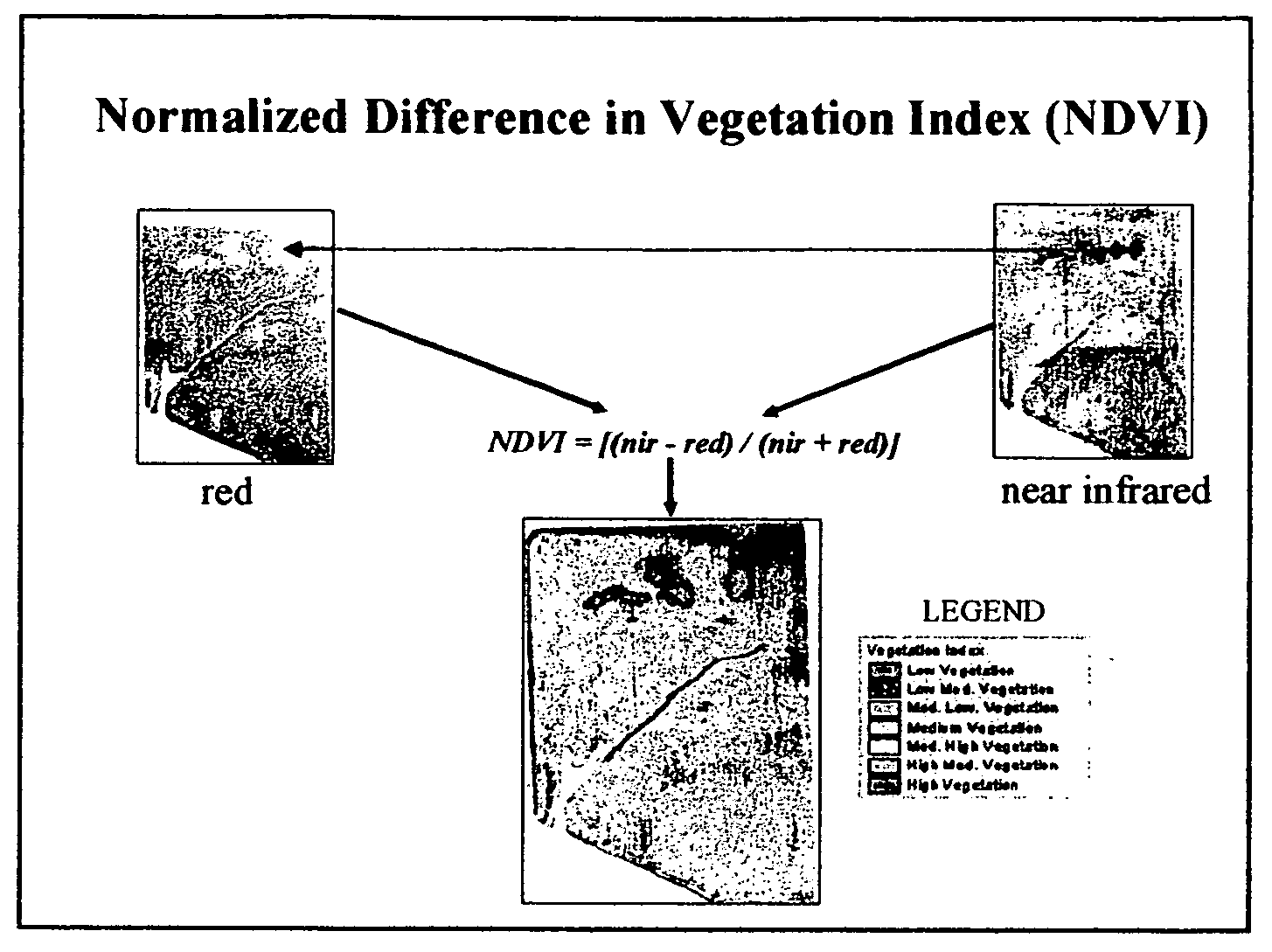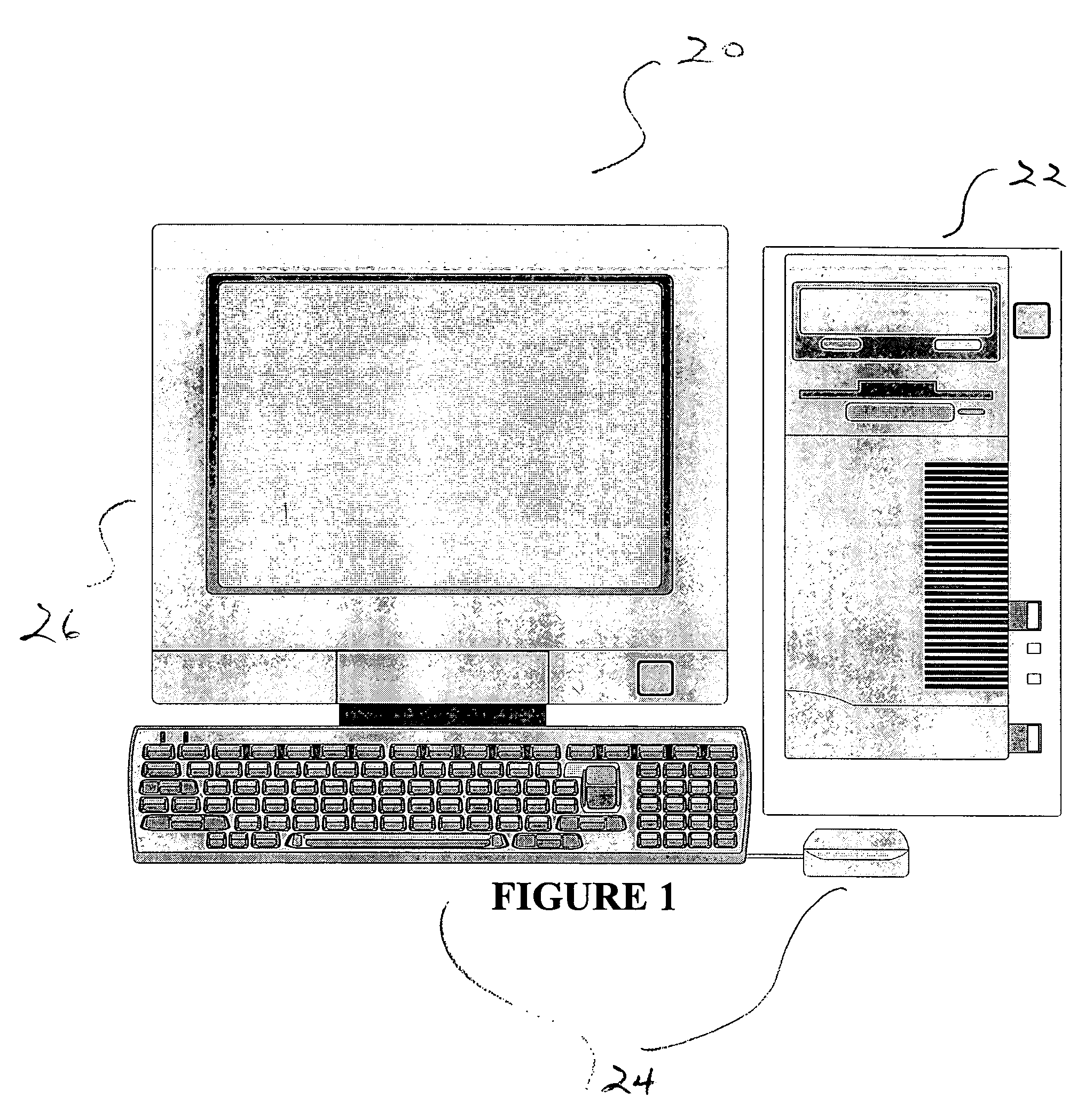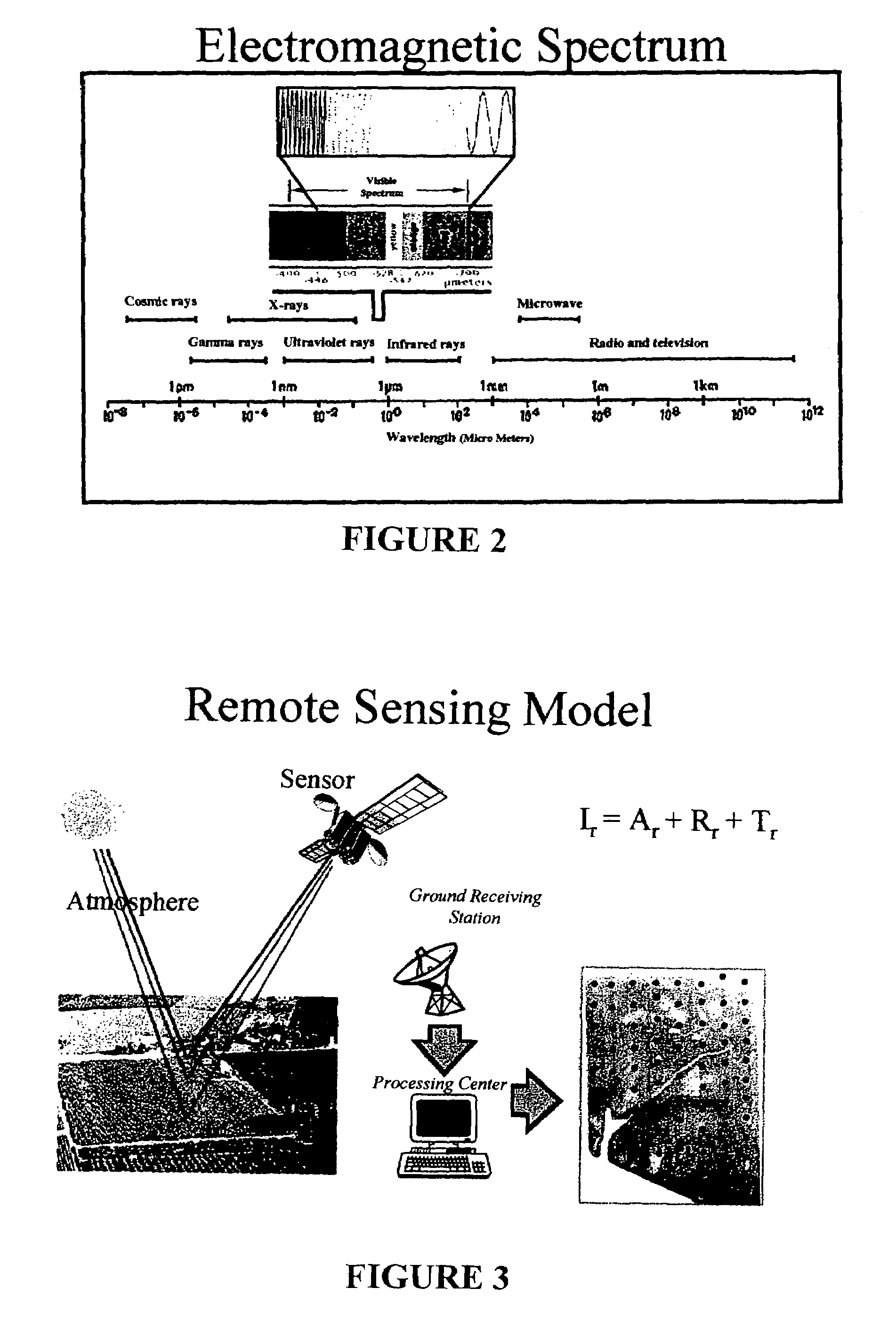Multi-variable model for identifying crop response zones in a field
a multi-variable model and crop technology, applied in image enhancement, image analysis, instruments, etc., can solve the problems of few reliable conclusions that can be drawn for a grower, ineffective control of conditions, and inability to know the successful methodology that has been developed for taking data
- Summary
- Abstract
- Description
- Claims
- Application Information
AI Technical Summary
Benefits of technology
Problems solved by technology
Method used
Image
Examples
Embodiment Construction
[0030]The present invention takes advantage of the remote sensing of visible and infrared radiation reflected from crops in order to generate the initial raw data. This raw data is then converted to a vegetation index value. The converted data is then aggregated, clustered, and classified into crop response zones. The process and methodology of creating crop response zones may by readily achieved by processing data on a personal computer, preferably a more powerful pc such as a workstation. As shown in FIG. 1, a personal computer 20 has a processor 22, a variety of input devices 24 such as a keyboard, mouse, etc. as is well known in the art, and a display 26 which preferably is a larger size such as 22′ computer monitor capable of producing color images. The majority of the computer programs used in the present invention are commercially available, except for the normalization step which is performed by the particular software program mentioned and included in this disclosure. This ...
PUM
 Login to View More
Login to View More Abstract
Description
Claims
Application Information
 Login to View More
Login to View More - R&D
- Intellectual Property
- Life Sciences
- Materials
- Tech Scout
- Unparalleled Data Quality
- Higher Quality Content
- 60% Fewer Hallucinations
Browse by: Latest US Patents, China's latest patents, Technical Efficacy Thesaurus, Application Domain, Technology Topic, Popular Technical Reports.
© 2025 PatSnap. All rights reserved.Legal|Privacy policy|Modern Slavery Act Transparency Statement|Sitemap|About US| Contact US: help@patsnap.com



